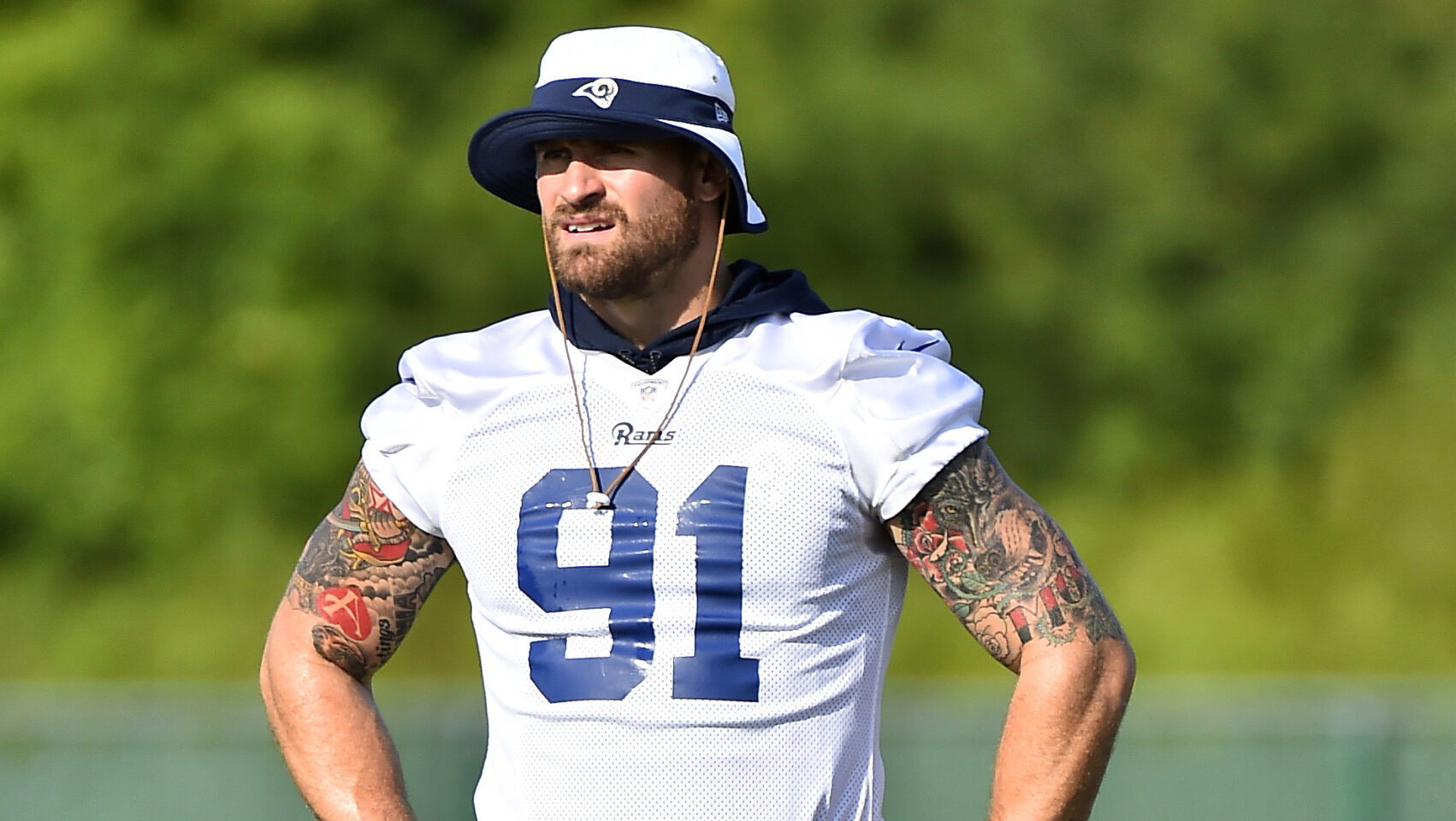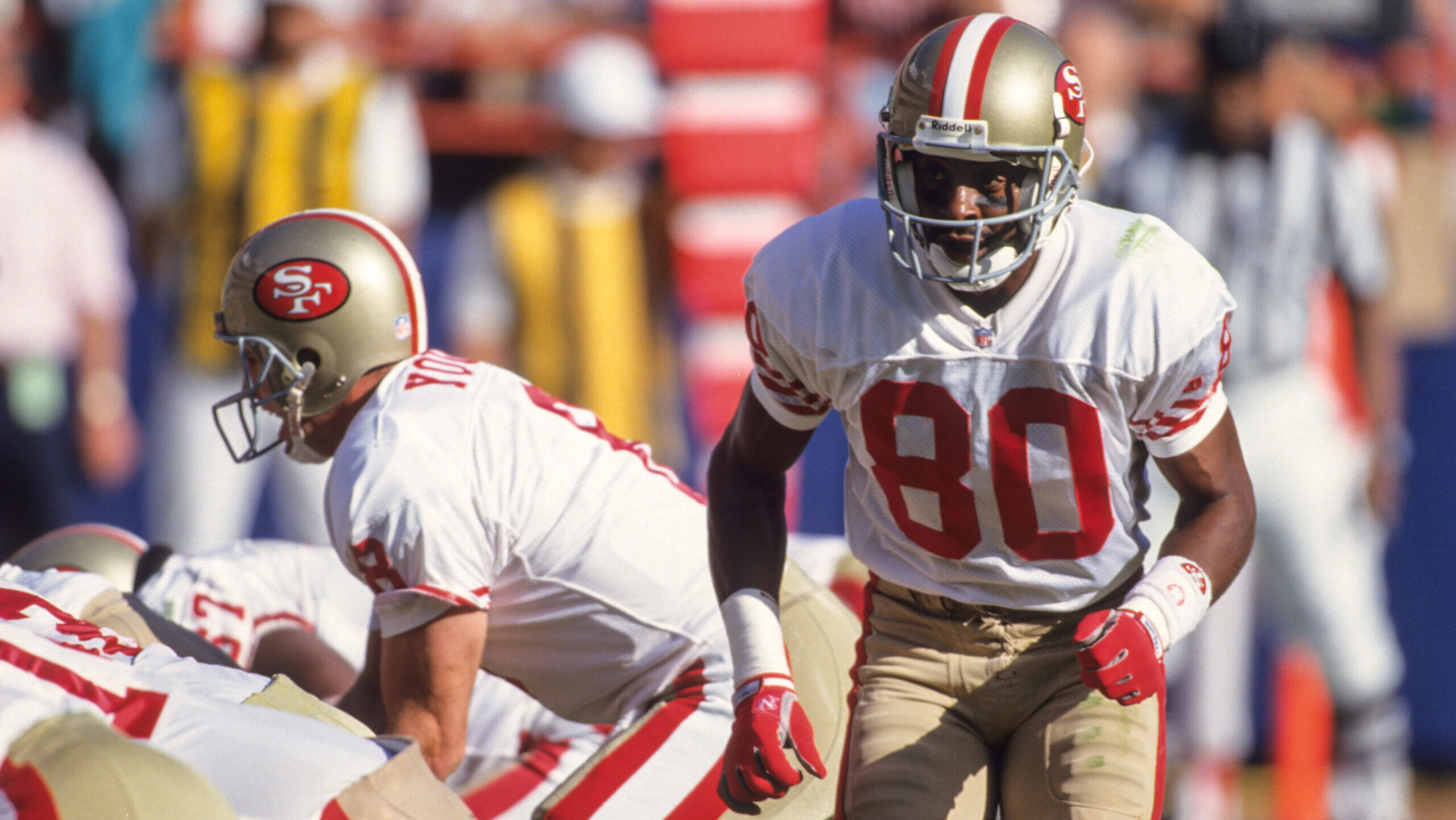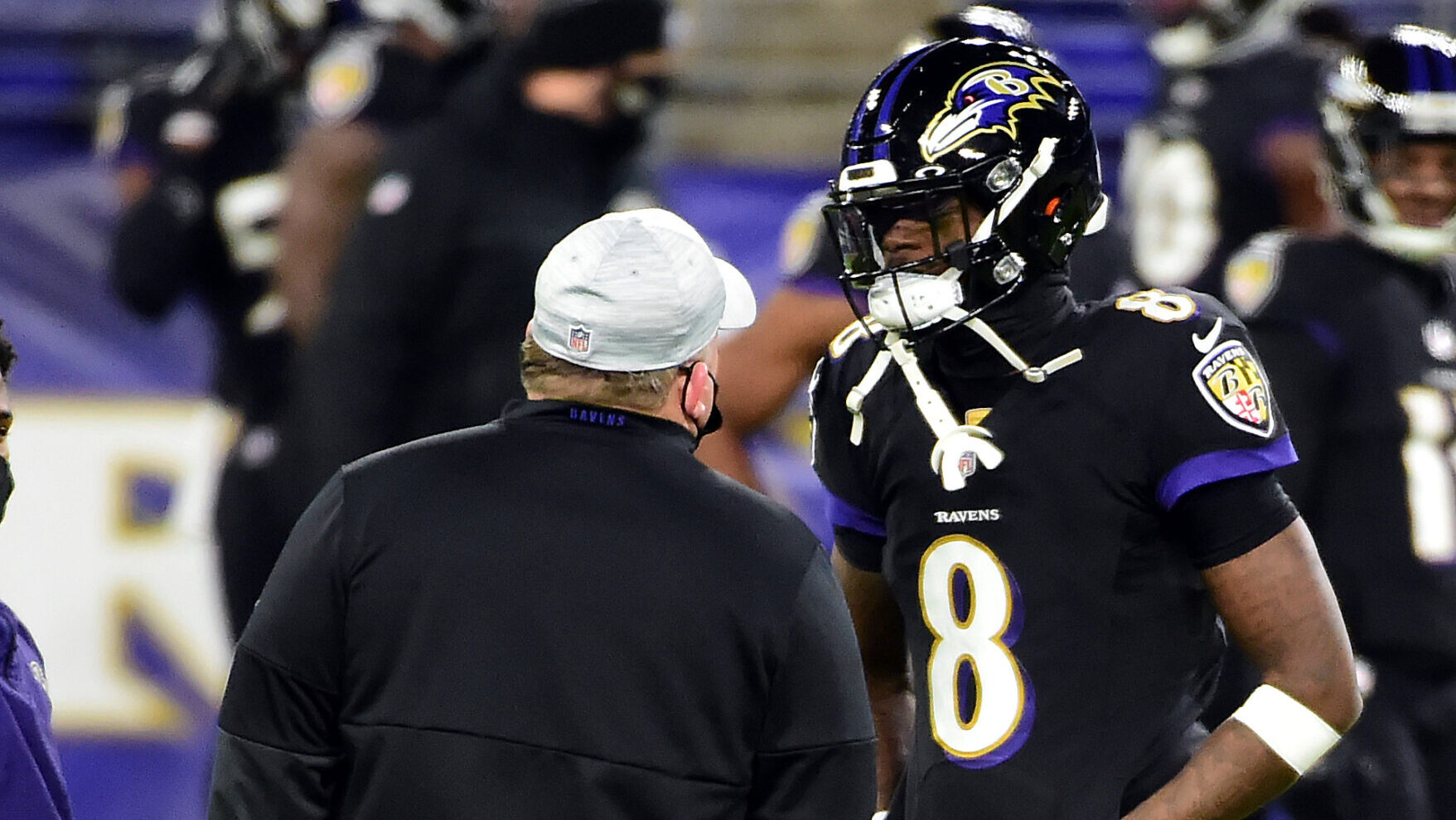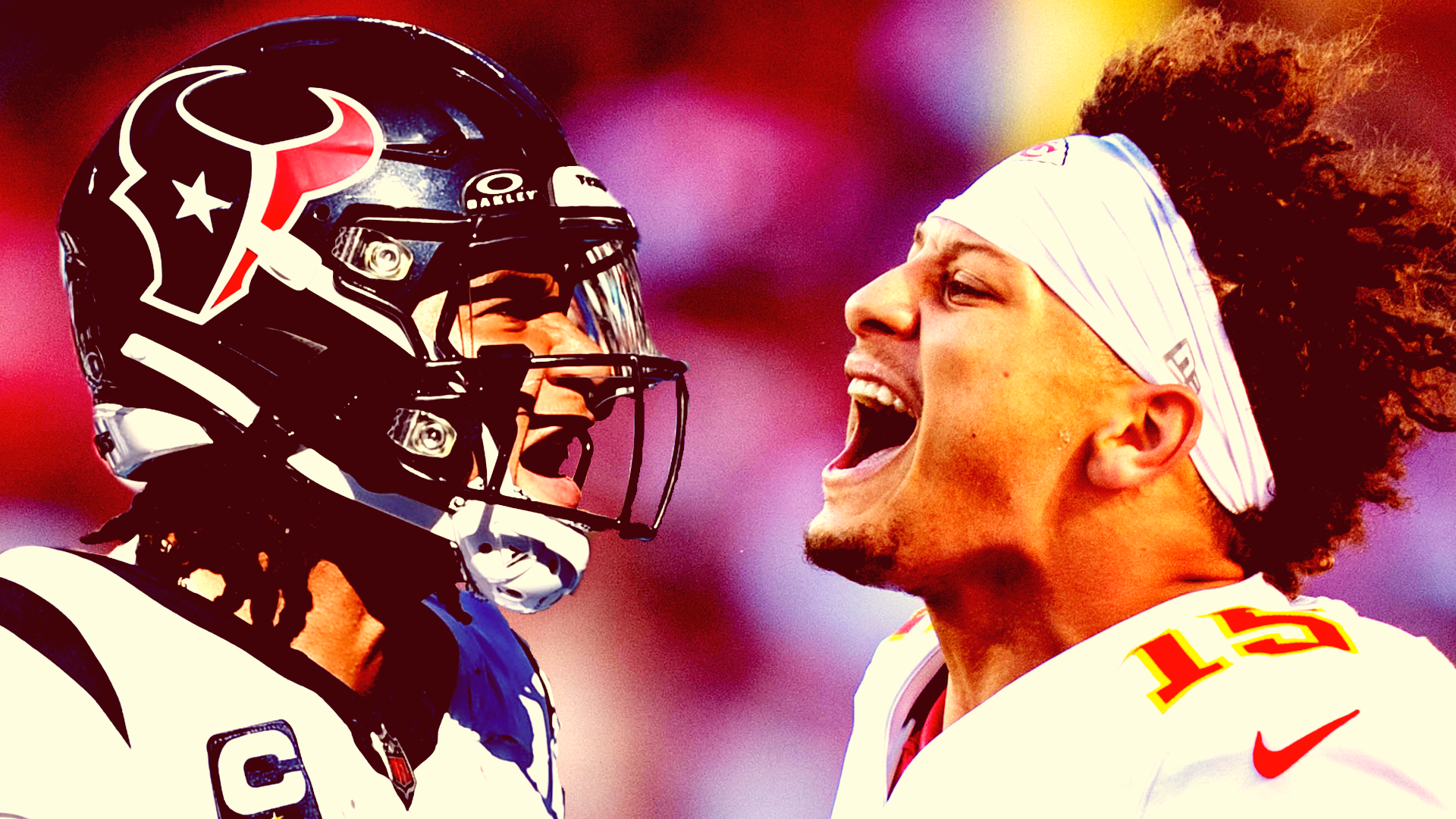NFL Analysis
2/29/24
8 min read
Quarterback Drafting Dilemma: Bridging the College-to-NFL Gap
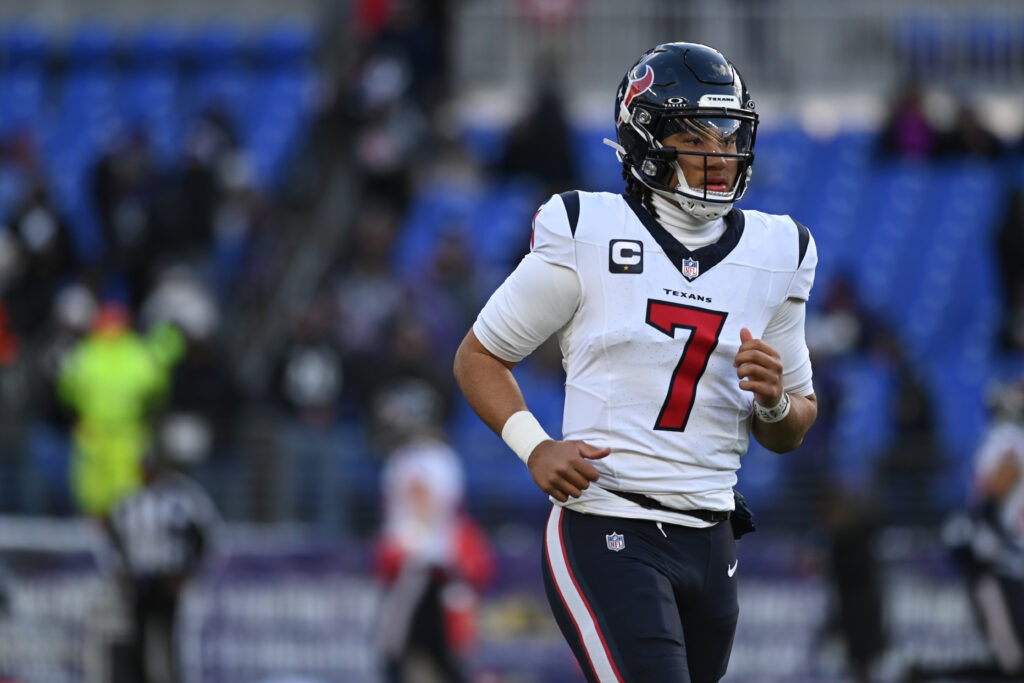
“If you’re good at algebra, does that mean you’re good at calculus?” That’s how Miami Dolphins coach Mike McDaniel framed the difference between playing quarterback in college and the NFL. “There are steps in between. It’s a different orchestration of talent and execution.”
How to scout quarterbacks and identify the successful ones was a popular topic as head coaches and general managers spoke to the media at the 2024 NFL Combine.
As important as the position is, the NFL hasn’t gotten much better at drafting quarterbacks. Doing so has arguably gotten harder because of the growing differences between college and professional games.
“College football is a different game that has overlapping variables,” McDaniel said. “There are different nuances to it: The time to throw is different, the space is different, the space to throw in the pocket, the space down the field. All the things that are pillars of the professional game, there’s a disparity in what the quarterbacks are asked to do relative to what they’re doing in college. It’s a taste of it, but it’s a whole other level, and that’s why it’s an inexact science.”
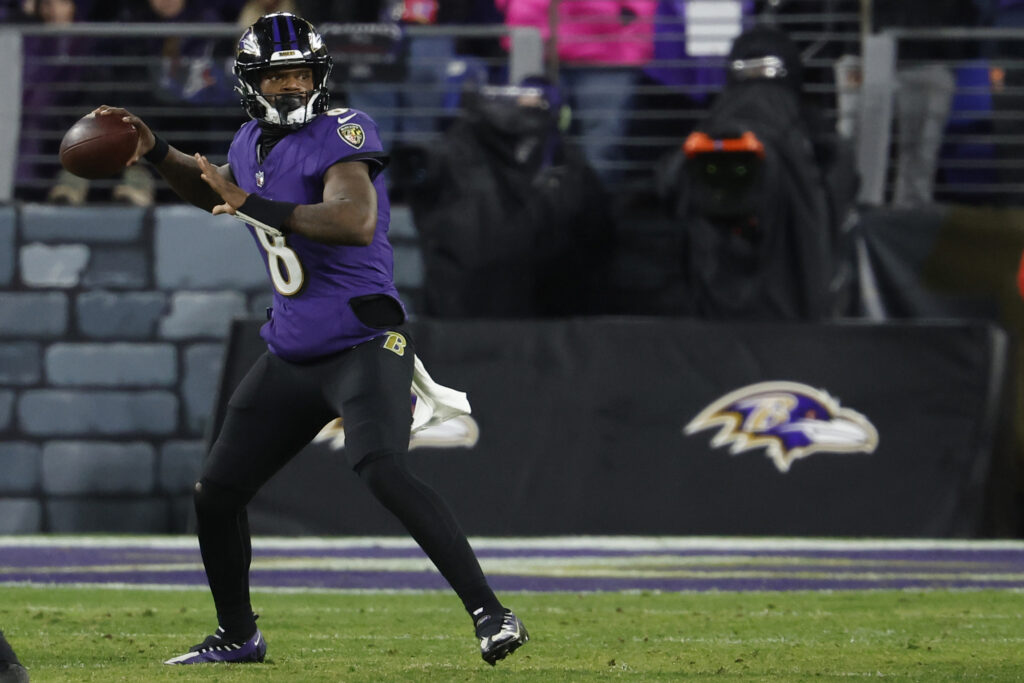
How QB Play Has Changed Recently
What a quarterback is asked to do hasn’t just changed at the college level. There’s been a shift in the style of quarterback play over the past half-decade in the NFL.
“I think the view has changed a lot in terms of how we view athletes or people in terms of their roles,” Baltimore Ravens coach John Harbaugh said about the changing landscape of quarterback play since the team drafted Lamar Jackson.
“The game has changed because of that,” Harbaugh said. “In the last six years, the way quarterbacks play — go back and look at football in 2015, 2016, 2017 and before that — there was a model to that position. The model has expanded tremendously. I would like to say we were a little ahead on the curve in that, but even we’re still learning as we go.”
Even as quarterbacks got more athletic, there was still a focus on what they did from the pocket. In the NFL, one of the most stable metrics from season to season is how a quarterback produces from a clean pocket. Because of that, it’s easy to emphasize that skill set.
But play from the pocket is more of a disqualifying factor than a secret to unlocking a quarterback’s potential. Quarterbacks should be able to play from a clean pocket. Buying too much into what those players can do in ideal circumstances can overstate what the quarterback is controlling himself.
“Quarterbacks should be able to play from a clean pocket. Buying too much into what those players can do in ideal circumstances can overstate what the quarterback is controlling himself.”
The NFL is also increasingly becoming an out-of-the-pocket league. Over the past four seasons, the rate of dropbacks that finished out of the pocket has increased from 16.4 percent in 2020 to 17.5 percent in 2023, per TruMedia.
How quarterbacks can play and create outside of the pocket has been a separator in performance. In 2023, quarterbacks averaged 0.06 EPA per play from inside the pocket. Those same quarterbacks averaged -0.01 EPA per play outside the pocket.
But look at the players who were among the most productive out of the pocket: Josh Allen (0.31), Dak Prescott (0.26), Jackson (0.17) and Patrick Mahomes (0.16). These are the players bringing value when a negative play is the expectation. That’s a differentiator.
On the flip side, quarterbacks who struggled outside the pocket included Mac Jones (-0.51), Zach Wilson (-0.50), Kenny Pickett (-0.30) and Bryce Young (-0.23). These quarterbacks' play from the pocket was impressive at the college level.
Take a look at the top 10 quarterbacks by EPA per play outside of the pocket over the past four seasons:
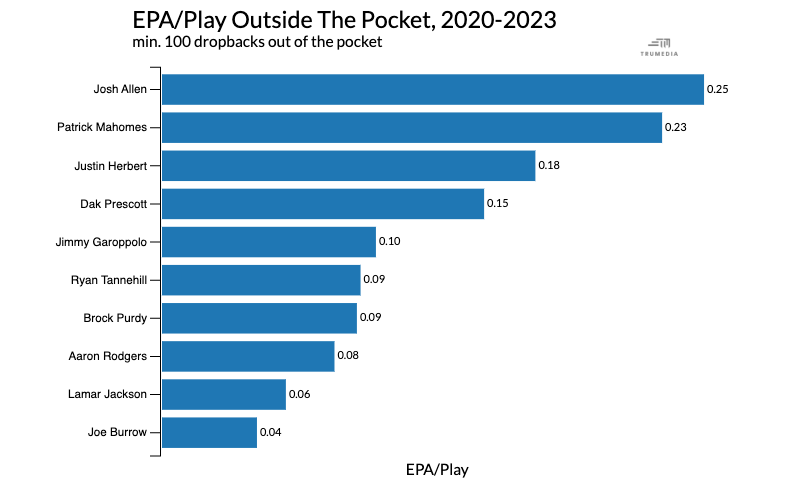
The names you’d expect are at the top of this list, along with some Kyle Shanahan quarterbacks who can thrive on bootlegs and have answers on broken plays. But even the out-of-structure playmaking from Brock Purdy was a separator for raising the ceiling over what Jimmy Garopplo gave the San Francisco 49ers' offense.
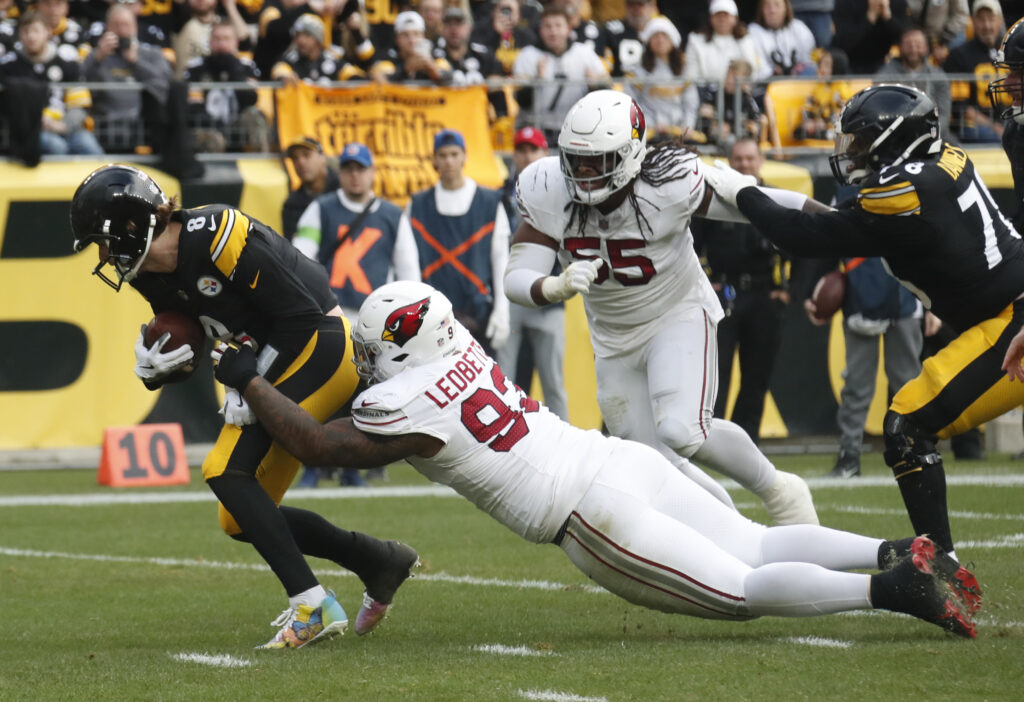
Mastering the Pocket
What matters more is how quarterbacks manage the pocket. The best quarterbacks in the league can navigate muddy pockets to either step up or make a play on the run.
As quarterbacks get more athletic and play out of the pocket more often, it’s not a surprise that the scramble rate has jumped for quarterbacks.
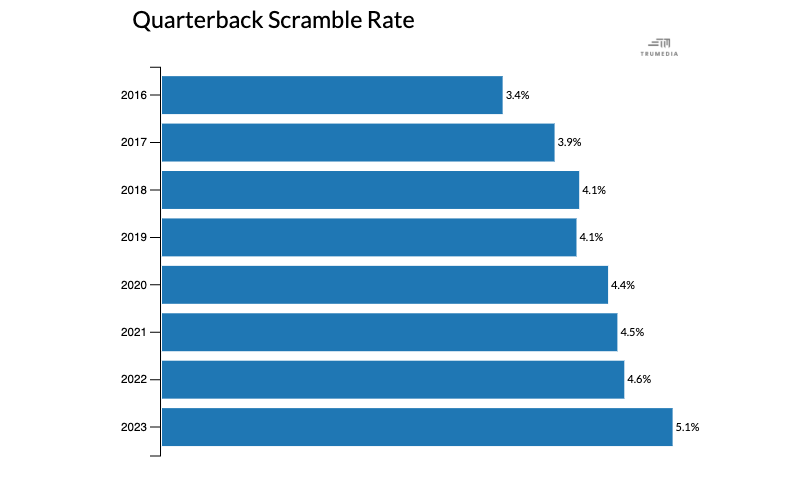
But the quarterback sack rate has also increased — it went from 5.9 percent in 2020 to 7.1 percent in 2023.
Sacks can be drive-killers and as detrimental as a turnover. On drives without a sack in 2023, offenses averaged 0.10 EPA per and 2.11 points per drive, while 38.9 percent of drives ended with a score. When there was just one sack on a drive, offenses averaged -1.23 EPA and 1.03 points per drive, while 23.5 percent of drives ended in a score and 51.5 percent ended with a punt.
But just playing out of the pocket or trying to create out of structure doesn’t get a quarterback a pass. The players with the most dropbacks outside the pocket in 2023 included Justin Fields, Pickett and Russell Wilson.
Pickett might be the best recent example of this disconnect.
Coming into the draft, many believed in his ability to play from the pocket, and his first-round status was based on that trait translating to an NFL offense. But he was also a quarterback who tried to get out of the pocket often, sometimes bailing before it was necessary, and he did not have the arm or creativity to consistently be successful on those types of plays.
That has been something he’s continued to struggle with over his first two seasons with the Pittsburgh Steelers.
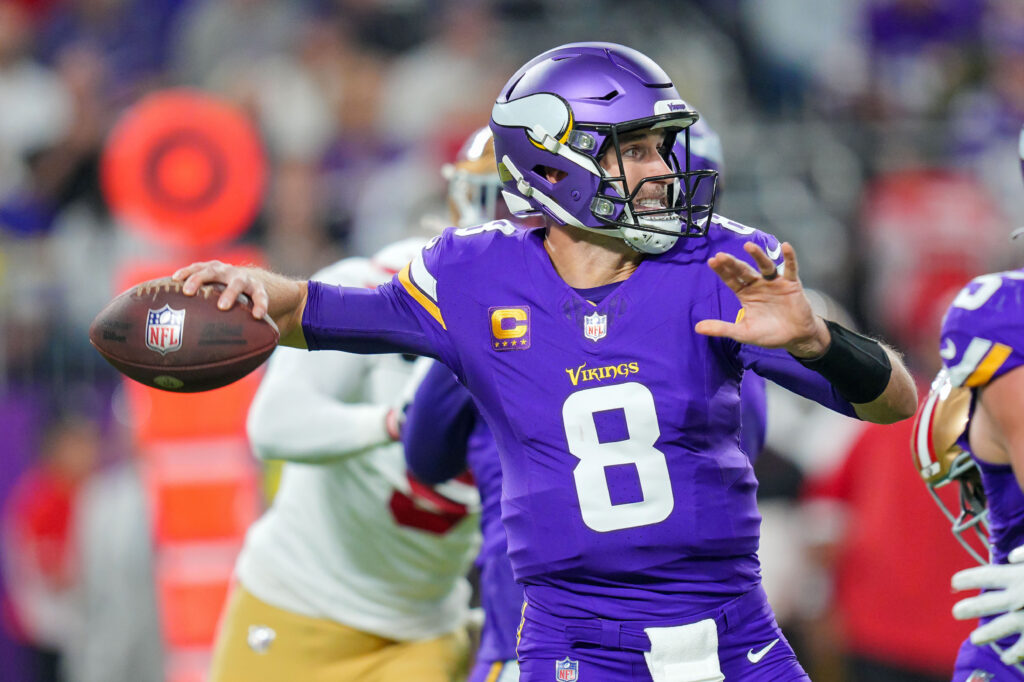
Striking a Balance
There’s a balance needed between going off-script to make plays and being reckless leading to negative plays. No quarterback is going to be completely on the positive side of that pendulum, but the best ones are going to have enough positive plays to make up for the negative ones.
That balance is going to come from a mix of mobility, arm talent and instincts. Identifying those and building off of them is where quarterback evaluation is going.
“Find the traits first,” Minnesota Vikings coach Kevin O’Connell said.
“How do you project the physical and mental makeup of a quarterback into your offense? Ultimately, understanding at the quarterback position — it may be the greatest example. Your offense needs to do what your players do well.”
“Your offense needs to do what your players do well.”
Minnesota Vikings head coach Kevin O'Connell
O’Connell mentioned processing as a foundational aspect of quarterback play but noted figuring out the ceiling from that perspective is a difficult task.
So much of that ceiling comes from a player's physical tools and how those can expand the margin of error for a quarterback as he grows and develops. The perfect pocket processor is no longer a thing — especially at the collegiate level — and it’s not a trait that can be leaned on exclusively for professional success.
“There’s a lot of great examples of guys coming into our league with some of those foundational points and then adding the rest of them to their skill set to become the complete player that they are,” O’Connell said.
“It’s unique,” O’Connell continued. “We’re always going to want to try to create the stencil so it becomes easier to evaluate. I know that’s one of the reasons I love evaluating the quarterback position — because it’s unique and dynamic. It’s your own way of looking at it because you have to be the one to bring them in, believe in them, uplift them, empower them every day and coach them to reach their potential.”
We’ll continue to see some more “raw” quarterback prospects — ones who don’t play like the traditional archetype at the position. That’s been the case for a while, but we’re starting to see many across the league acknowledge this change.
There's still no secret formula for quarterback scouting, but betting on special traits and knowing which ones can be molded and developed will be the path smart teams will embrace going forward.


